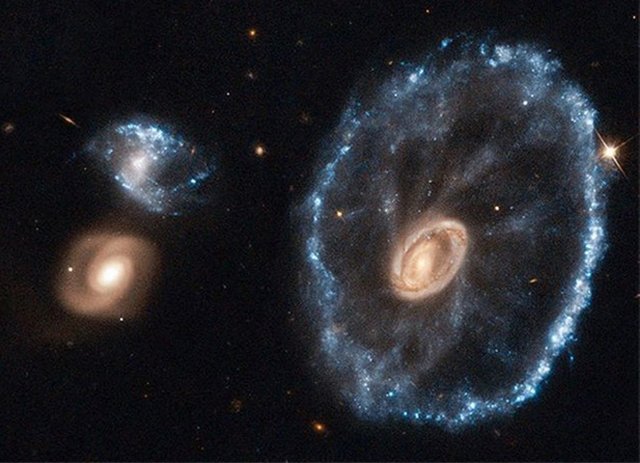The object was first spotted on wide-field images from the U.K. Schmidt telescope and then studied in detail using the Anglo-Australian Telescope.
Lying about 500 million light-years away in the constellation of Sculptor, the cartwheel shape of this galaxy is the result of a violent galactic collision. A smaller galaxy has passed right through a large disk galaxy and produced shock waves that swept up gas and dust — much like the ripples produced when a stone is dropped into a lake — and sparked regions of intense star formation (appearing blue). The outermost ring of the galaxy, which is 1.5 times the size of our Milky Way, marks the shock wave’s leading edge. This object is one of the most dramatic examples of the small class of ring galaxies.
This image is based on earlier Hubble data of the Cartwheel Galaxy that was reprocessed in 2010, bringing out more detail in the image than seen before.

good luck,@dspace
Downvoting a post can decrease pending rewards and make it less visible. Common reasons:
Submit
Hi! I am a robot. I just upvoted you! I found similar content that readers might be interested in:
https://phys.org/news/2018-01-image-hubble-cartwheel-galaxy.html
Downvoting a post can decrease pending rewards and make it less visible. Common reasons:
Submit